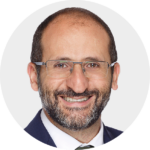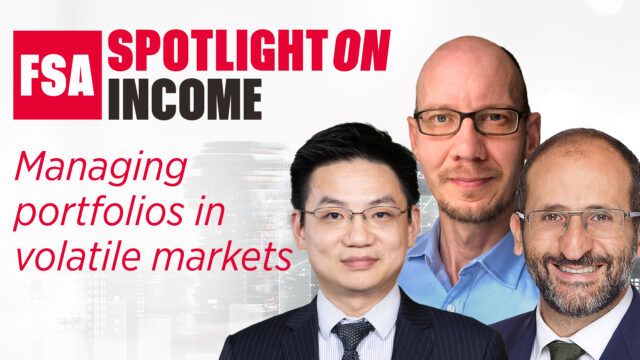How can investors balance the desire for yield, diversification and sustainability in their portfolios?

Managing director and portfolio manager, ClearBridge Investments
Charles: An allocation to listed infrastructure not only provides reliable and growing income but also diversification across sub-industries and across various political and regulatory regimes. The return drivers and risks facing the different sub-sectors within this asset class are fairly unique and differentiated from other equity sectors and as such may offer genuine diversification.
Here, specialist listed infrastructure investment managers have a sustainable competitive advantage, applying their specialist sector knowledge with a focus on long-term outcomes. They ensure capital providers are compensated with the appropriate returns that is aligned with the long-term nature of regulation and contractual structures.

Portfolio manager and head of Asia ex-Japan credit research, PineBridge Investments
Andy: We believe the Asia bond market is an opportunity-rich asset class that offers investors the rare combination of better yields, lower sensitivity to interest rate hikes (shorter duration) than other regions, and strong credit quality, which are essential in navigating today’s challenging markets. The more challenging global macro backdrop will inevitably imply increased return dispersion among the issuers. In our view, the key to harnessing these inherent market characteristics is careful security selection. This means setting a robust, research-based investment criteria, beyond just market size or yield metrics, to uncover value.
For instance, ESG factors consideration is an important pillar of our selection process because we believe an issuer’s environmental or social footprint, or governance action or inaction could pose material risks to its future earnings and repayment ability, particularly as regulations in Asia continue to evolve. The more active and benchmark unconstrained you are in finding these opportunities, the more likely one can take advantage of the full diversity of the Asia bond market and potentially achieve a sustainable income stream.
What are the key risks for income investors for the rest of 2022?

Managing director and portfolio manager, ClearBridge Investments
Charles: High inflation remains a risk for global markets, on account of ongoing supply chain disruptions, the Russia-Ukraine crisis and the start-and-stop lockdown cycle in China as they continue to adhere to a “zero-Covid” strategy. The outlook for interest rates and inflation will continue to spark bouts of volatility in markets as investors digest expectations of a slowdown in global growth in conjunction with central bank tightening that has been more hawkish than investors previously anticipated. Also, there is a growing risk that potential policy mistakes sparked by an overly aggressive tightening cycle, coupled with stiffer headwinds for growth, could tip the economy into a recession, although this is not our base case.

Fund manager,
M&G Investments
James: Because of their variable coupons, high yield floating rate bonds have very low levels of duration. As a result, they offer protection against the risks of higher inflation and interest rates, and are even likely to benefit in such an environment. In our opinion, the key risks for investors are therefore that the world goes through a sharp economic slowdown or recession, potentially brought about by an escalation of the war in Ukraine, or a hard landing from overtightening of monetary policy in the United States.
We aim to mitigate these risks by building diversified portfolios and by investing a majority of our assets in senior secured bonds, which have historically had higher recovery rates and lower drawdowns than unsecured high yield bonds in times of market stress. Finally, given the correction we have seen in bond markets this year, we also believe high yield floating rate corporate bonds are now much more appealing than previously from a valuation perspective.

Portfolio manager and head of Asia ex-Japan credit research, PineBridge Investments
Andy: The outlook appears to revolve around a question of two landings: whether the Fed would be able to pull off unprecedented tightening without causing a recession and whether China’s stimulus would be able to keep growth on its intended path. We see determined effort in mainland China to engineer a soft landing for the economy through various stimulus measures. Meanwhile, in its May FOMC meeting, the Fed signaled a potential longer series of hikes that puts policy beyond neutral, acknowledging the urgency of containing inflation. At the same time, a geopolitical overhang in Europe continues to feed uncertainty through the commodity and energy markets.
From investors’ point of view, the priority comes down to how they can protect their portfolios from potential capital depreciation due to inflation and rate hikes, and yet position for future recovery. We believe this environment requires investors to be in segments where credit quality is strong, and where there are sufficient buffers against further downsides.
The Spotlight On: Income ran on 20 – 22 June and ended with a LIVE event (on the 22nd) where we brought together a panel of fund selectors and the fund managers to discuss their views and join an interactive Q&A session.
Find out more about our Spotlight On: Income here: https://fundselectorasia.com/spotlight-on/income-2022/

















